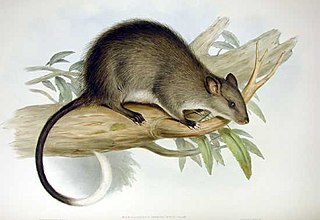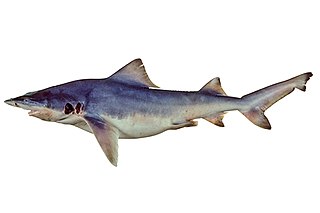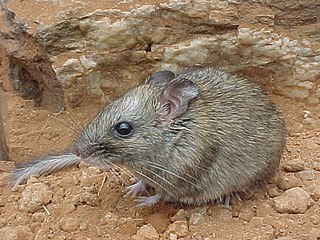
Palmgrove is a national park in south-central Queensland, Australia. It lies about 185 km north-north-east of Roma and 458 km north-west of Brisbane. It is listed as a National Park (Scientific) under the Nature Conservation Act 1992, so giving it the highest level of protection possible under the Act. It was established in order to protect species and ecosystems of exceptional scientific value. It is located within the Dawson River catchment area.

The northern quoll, also known as the northern native cat, the North Australian native cat or the satanellus is a carnivorous marsupial native to Australia.

The singing bush lark or Horsfield's bush lark is a species of lark which inhabits grassland throughout most of Australia and much of Southeast Asia. It was described by the American naturalist Thomas Horsfield.

Morelia bredli is a species of non-venomous snake in the family Pythonidae. The species is endemic to Australia. No subspecies are recognized. Its common names include Bredl's python, the Centralian python, the Centralian carpet python, the central Australian carpet python, Bredl's carpet python, the central Australian Bredl's carpet python, and the central Bredl's carpet python.

The black-footed tree-rat, also known as Djintamoonga, is one of two endemic Australian rodent species in the genus Mesembriomys. Both the black-footed tree-rat and its congener, the golden-backed tree-rat, are found in northern Australia. The species is one of the largest murids found in Australia.

The northern river shark or New Guinea river shark is a species of requiem shark, in the family Carcharhinidae, found in scattered tidal rivers and associated coastal waters in northern Australia and in Papua New Guinea. This species inhabits areas with poor visibility, soft bottoms, and large tides, with immature sharks ranging into fresh and brackish water. It is similar to other river sharks in having a stocky grey body with a high back, tiny eyes, and broad fins. It measures up to 2.5 m (8.2 ft) long.

The short-eared rock-wallaby is a species of rock-wallaby found in northern Australia, in the northernmost parts of the Northern Territory and Western Australia. It is much larger than its three closest relatives, the eastern short-eared rock-wallaby, the nabarlek and the monjon.

The pygmy long-eared bat is a vesper bat, found in the north of the Australian continent. An insectivorous flying hunter, they are one of the tiniest mammals in Australia, weighing only a few grams and one or two inches long.

The brush-tailed rabbit rat is a species of rodent in the family Muridae. It is found in Australia and Papua New Guinea.
The dusky rat is an indigenous species of rodent in the family Muridae found in Australia.
The Arnhem Land rock rat also known as the Arnhem rock-rat and by the Indigenous Australian name of kodjperr is a species of rodent in the family Muridae. It is found only in the Top End Region of the Northern Territory in Australia.

The central rock rat, also known as the central thick-tailed rock-rat, Macdonnell Range rock-rat, and Australian native mouse, is a Critically Endangered species of rodent in the family Muridae endemic to Australia.

The Victoria Plains tropical savanna is a tropical and subtropical grasslands, savannas, and shrublands ecoregion in northwestern Australia.
The Arnold River is a river in the north of the Northern Territory of Australia.
Amungee Mungee Station is a pastoral lease that operates as a cattle station in the Northern Territory of Australia.
The Bullwaddy Conservation Reserve is a protected area approximately 120 km (75 mi) north east of Elliott in the Northern Territory of Australia.

The purple-backed fairywren is a fairywren that is native to Australia. Described by Alfred John North in 1901, it has four recognised subspecies. In a species that exhibits sexual dimorphism, the brightly coloured breeding male has chestnut shoulders and azure crown and ear coverts, while non-breeding males, females and juveniles have predominantly grey-brown plumage, although females of two subspecies have mainly blue-grey plumage. Distributed over much of the Australian continent, the purple-backed fairywren is found in scrubland with plenty of vegetation providing dense cover.

Macropteranthes kekwickii, commonly known as bullwaddy, is a species of woody tree or shrub native to the Northern Territory in Australia.
Dansiea elliptica is a species of rainforest tree which is endemic to Queensland, Australia. The species, which occurs within two highly disjunct centres of distribution, is primarily found in drier notophyll vine forests and semi evergreen vine thickets in the Wet Tropics of Queensland and Central Queensland. The species is listed as Near Threatened under the Queensland Nature Conservation Act (1992) and has a total area of occupancy of less than 40 square km.













